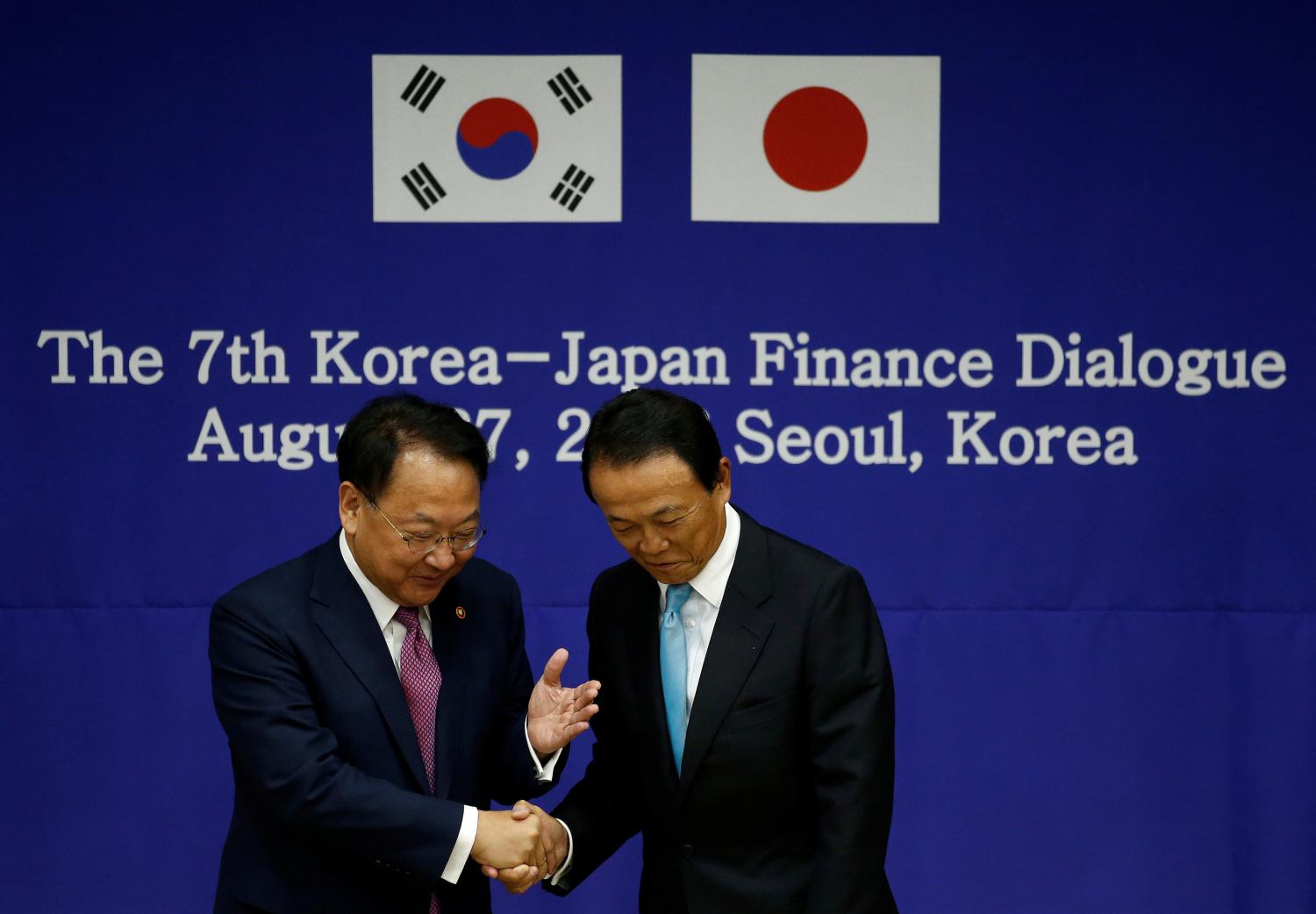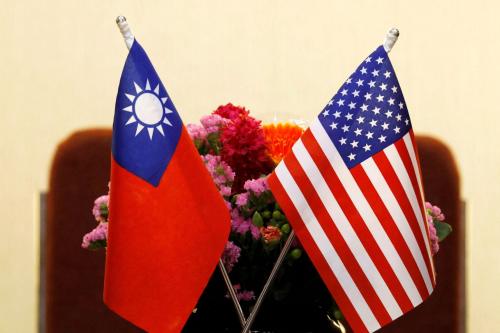Over the past year there has been much speculation as to the impact of the global economic crisis on China. Debates range from concerns over domestic stability and the Chinese Communist Party’s ability to rule, to what China’s role should be in helping the international community to “solve” the crisis. However, little attention has been given to the impact of the economic crisis on China’s national defense, or to its potential impact on the Chinese People’s Liberation Army’s (PLA) ability to continue to reach its lofty, and costly, modernization goals.
The recently issued White Paper on “China’s National Defense in 2008” describes some of these modernization goals, aimed at producing a force capable of fighting “local wars under informatized conditions.” They include improving military training, continued emphasis on personnel development, particularly in the officer corps, more cost-effective logistics support, improved integrated equipment support, and greater emphasis on information technology and building of military information systems.[1] In addition, China has entered an era in which its expanding role in the international community, as both a regional and global leader, is forcing the PLA out of its traditional comfort zones and into increasingly complex and challenging activities at home and abroad. The most recent of these activities is the deployment of Chinese navy ships to the Horn of Africa, to participate in a multinational counter-piracy effort.[2] The PLA has also sent troops abroad on various peacekeeping operations in Africa. On the domestic front, the PLA has been called to the aid of the Chinese people in times of disaster and emergency, as with the March 2007 snowstorms and the Sichuan earthquake in May 2008.[3]
The stakes are high for these missions: the international and domestic spotlight is squarely on the PLA. However, success for these and other operations depends on the PLA’s ability to man, train, and equip the military with what it needs to accomplish the mission, as well as on its ability to sustain operations and mobilize national assets in support of emergency relief and military contingencies. All of this presumes a certain level of domestic stability, funding, and access to resources.
What are the potential impacts of China’s changing economic environment on the PLA, and in particular on its ability to continue along a path of successful military modernization? While a truly complete answer to this question would require a longer article, there are three areas in particular where the economic crisis has the potential to affect the PLA: the defense budget, domestic unrest, and civil-military relations.
The Economic Crisis and China’s Defense Budget
China’s economic situation appears to be worsening as the global crisis deepens. According to recent estimates, China’s real GDP growth from January-September 2008 was 9.9%, 2.3% lower than the same period in 2007, and predictions for the results of 2008 show GDP growth slowing from 11.9% in 2007 to 9.8%. Analysts also predict that in 2009 GDP growth could drop further, to 8.4%.[4] China’s export sector has also suffered, with China’s official Xinhua News Agency reporting that Chinese exports had fallen sharply in the first half of 2008, and that half of China’s toy exporters had closed their doors.[5] In November 2008 the Chinese government announced a whopping $586 billion stimulus package focused on a host of domestic issues such as infrastructure construction, the public health system, education, welfare benefits, and subsidized housing.[6]
China’s slowing GDP growth and spending on stimulus packages—not to mention the money the CCP must increasingly put toward other daunting socioeconomic issues such as environmental pollution, poverty, and pension programs—begs the question of whether China can continue to maintain double digit increases in defense spending as it has over the past several years. The current economic crisis raises the prospect of the PLA becoming the victim of a “guns versus butter” debate.
In March 2008 the PRC announced a 17.6% increase in its defense budget and now spends, according to official figures, $59 billion a year. This followed an average annual increase of 15.8% from 2003 to 2007. The defense budget is only 1.4% of China’s GDP, again according to official figures. [7] U.S. estimates, published in the 2007 Annual Report to Congress on the Military Power of the People’s Republic of China, place China’s military spending at the higher figure of between $97 billion and $125 billion. China has stated that the budgetary increases are primarily for costs associated with raising military personnel’s standard of living, and that only a small amount of the money goes toward procurement of new technology and weapons. The PLA has certainly had to absorb the cost of overhauling its personnel system as it implemented the policies necessary to get rid of the “dead weight” in the PLA and attract, retain, and train the types of soldiers it needs to man the high-tech force it wishes to become.[8] However, there are also examples of the PLA recently investing in costly technological ventures, particularly in the space arena.
From a purely numeric point of view, some experts contend that in spite of an economic slowdown, China will be able to continue to maintain or even increase its military spending. A RAND report published in 2005 estimated that by 2025 China’s defense spending will be $185 billion, even with a lower average annual economic growth rate of 5%.[9] That said, the PRC government is already feeling increased pressure to put more money into social services, and there are certainly many domestic social woes that could limit or drive government spending away from defense. These social challenges—such as the costs associated with an aging population, a widening urban-rural income gap, and health costs from pollution—will only be exacerbated by the economic crisis. In spite of this, best estimates are that the PLA will receive the funding it needs and will likely not have to substantially cut military programs in the future.
The Economic Crisis and Increase in Domestic Unrest
Beyond the defense budget, the PLA depends on a host of other factors to continue on a path of successful military modernization. The Party mandates that the PLA has a responsibility to help maintain domestic stability, and therefore the issue has the potential to divert PLA attention and resources. In part, the PLA’s success hinges on its ability to deal with the external security challenges brought about by China’s global presence, while at the same time fulfilling its role as the Party’s guarantor of internal stability. And it must do both of these while it is still struggling to professionalize.
There are signs that the economic crisis has brought increasing unrest to China. Although the PRC government has not published official figures on mass incidents since 2004, experienced foreign analysts, drawing on Chinese sources, estimate the official figure at 80,000-90,000 incidents a year.[10] Exacerbating the prospects for domestic protest, analysts estimate that slower GDP growth, specifically growth below 8%, will not allow the government to create the jobs necessary to employ China’s 20 million new job seekers each year.[11]
In November Chinese Public Security Minister Meng Jianzhu stated that police, “should be fully aware of the challenge brought by the global financial crisis and try their best to maintain social stability.” On January 5 Hu Jintao cautioned the People’s Armed Police (PAP), stating that challenges in 2009 would be “hard and complicated.”[12] Although the Party has put resources into better training for the PAP and other domestic security forces, the lackluster performance of these organizations in some cases has called their competency into question. A recent example is the March 2008 pre-Olympic riots in Tibet, during which the Public Security and PAP forces apparently lost control of parts of Lhasa and the PLA were forced to become involved. In addition, the Party recently issued new PLA training materials for handling unrest and other domestic stability issues, further indicating that the Chinese military could potentially have a more robust role in this area.[13]
While the PLA has thus far largely avoided involvement in suppressing domestic unrest, the Tibet incident does raise the question of whether the military will be able to keep its distance from the rising numbers of protests and riots. If the PAP and other domestic security forces do not prove up to the task, the PLA might very well find itself more involved in China’s domestic security, which could impact its ability to focus on broader modernization plans. The degree to which this would be the case is of course dependent on the level of domestic unrest and how much attention the PLA needs to devote to internal security missions; something to watch for as the impact of the economic crisis in China becomes more apparent.
The Economic Crisis and Civil-Military Relations
Another potential impact of the economic crisis on the PLA’s modernization plans is increased frictions in civil-military relations, particularly those at the local level, brought about by greater resource constraints and other socioeconomic changes in China’s society. There are some areas where economic realities are presenting challenges to the PLA in civil-military relations:
First, the PLA is challenged in attracting and retaining the types of well educated youth it needs for its modern officer corps. China’s civilian college graduates are increasingly turning to the private sector for more lucrative jobs, and while the slowing economy has made the PLA a more attractive option for out of work college graduates, the number of recruits is still small. This has forced the military to put more money toward financial incentives to recruit these college graduates.[14] At the same time, the economic crunch is making the military an increasingly attractive option for China’s less educated rural youth, which are less desirable to the PLA. The PLA’s difficulty in recruiting China’s middle-class, educated, tech-savvy youth could potentially undermine its ability to build the modern, technology-centric officer corps it is aiming for.
A second area in which the PLA is challenged is the increasing difficulty of persuading local officials to bear the costs of providing the PLA with the materiel and support it needs for training and large scale exercises. Evidence suggests that this tension between the PLA and local officials has grown in recent years, and that local officials have increasingly grumbled about providing resources to the PLA and losing money for themselves, even when China’s economy was growing at a double-digit rate. A worsening economic situation could potentially make local civil-military relations even more challenging, which has implications for China’s national defense mobilization system and readiness.[15]
The PLA’s ability to adapt to rapidly changing domestic circumstances also hinges on the state of its relationship with the Party. For the moment, the Party appears to support the PLA in its modernization goals and seems to be providing it with the resources and funding required, but this may not always be the case depending on the economic or domestic situation. One could imagine that Party-PLA tensions could arise if, for example, the internal stability situation worsens and the PLA is called in to suppress mass incidents, bringing it closer to the level of involvement in domestic politics in the aftermath of the 1989 Tiananmen Square massacre. Additionally, changes in China’s external security situation could drive future “guns vs. butter” debates between the Party and the PLA, particularly as the Party faces mounting social pressures and tighter budgets. For example, with Ma Ying-jeou’s election and reduced tensions between the Mainland and Taiwan, one could argue that the PLA has less immediate reason for the continued fast-paced acquisition of advanced equipment. If China’s domestic problems become bad enough, it could provide impetus for the Party to decide that now is the time to cut back on expensive defense spending and invest in social services instead.
In closing, China’s changing economic and domestic situation is affecting the PLA in various ways, some of which are likely to be further exacerbated by the current economic crisis. The PLA has proven adept at taking advantage of opportunities provided by the changing socioeconomic environment where it can, and has already made headway in addressing some of the domestic challenges it faces. However, it is clear that these challenges are likely to exist for some time to come, and as China is changing so must the PLA.
This commentary reflects the author’s personal views and does not reflect any view or opinion of the U.S. Government.
[1] State Council Information Office of the People’s Republic of China, “China’s National Defense in 2008.”
[2] For a summary of PLA Navy counter-piracy operations in Somalia, see the PLA Daily’s website, “China’s Navy Fights Pirates,” http://english.chinamil.com.cn/site2/special-reports/2008hjdjhd/indexg.htm.
[3] For information on peacekeeping operations see: Information Office of the State Council, “China’s National Defense in 2006,” December 29, 2006. In addition, the PLA’s increased focus on non-traditional security missions were announced by Hu Jintao in 2004, in his speech, “Historic Missions for Our Military in the New Period and the New Century.”
[4] CRS Report for Congress: “China and the Global Financial Crisis: Implications for the United States,” Wayne M. Morrison, updated November 17, 2008.
[5] China Xinhua News Agency, November 4, 2008.
[6] Zhiwu Chen, “Economic Crisis Could Push Reform in China,” published by Yale University in YaleGlobal Online, http://yaleglobal.yale.edu/display.article?id=11596.
[7] BBC News, “Q&A: China’s Military Budget,” published on March 3, 2008.
[8] For more explanation on the PLA’s personnel policies, see Roy Kamphausen, Andrew Scobell, Travis Tanner (eds.) The “People” in the PLA: Recruitment, Training, and Education, published by the National Bureau of Asian Studies, Strategic Studies Institute, 2008.
[9] RAND Project Air Force Research Brief, “Forecasting China’s Military Spending Through 2025,” www.rand.org.
[10] I am grateful to Murray Scot Tanner for his help and excellent comments on protests and mass unrest in China.
[11] Morrison, “China and the Global Financial Crisis…” Op. cit.
[12] Reuters, “China Seeks to Curb Unrest Amid Global Financial Crisis,” November 19, 2008. South China Morning Post, “Hu Rallies Police Unit,” January 5, 2009, in Hong Kong South China Morning Post Online in English, www.scmp.com.
[13] For an in-depth look at the PLA’s involvement in domestic unrest, see Murray Scot Tanner, CNA, “How China Manages Internal Security Challenges and its Impact on PLA Missions,” forthcoming publication from the National Bureau of Asian Research.
[14] One example of these incentives is the National Defense Scholarship Program, which helps pay for the cost of attending college in return for service in the PLA.
[15] For a detailed discussion of this and other civil-military issues, see David Finkelstein and Kristen Gunness (eds), Civil-Military Relations in Today’s China: Swimming in a New Sea, ME Sharpe, 2007.
The Brookings Institution is committed to quality, independence, and impact.
We are supported by a diverse array of funders. In line with our values and policies, each Brookings publication represents the sole views of its author(s).




Commentary
Op-edBuilding a Modern Military: The Economic Crisis and its Impact on the Chinese People’s Liberation Army
February 10, 2009